World 🢖 Africa 🢖 Republic of the Congo
Places with cryptozoological phenomena 🢔 Sites of legends 🢔 Legendary wonders 🢔 Categories of wonders
Wonder
Lake Tele
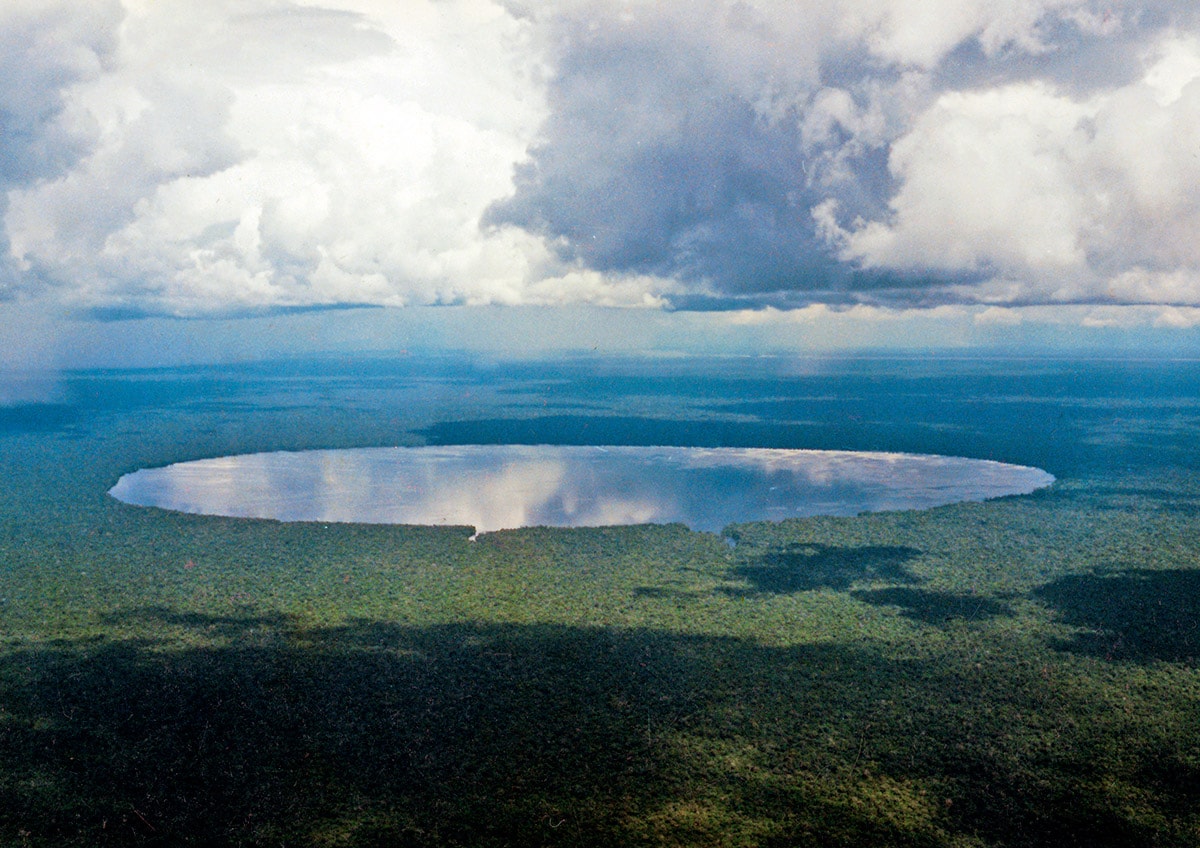
 In short
In short
If there exists middle of nowhere, Lake Tele is there. At least for humans, because the environment here is extremely hostile to them.
 52.5%
52.5%
GPS coordinates
Location, address
Name in French
Alternate names
Area
Cryptid
Diameter of the purported impact crater
Depth
Age of purported impact
Map of the site
If you see this after your page is loaded completely, leafletJS files are missing.
 In detail
In detail
Many other animals though feel here well and one of these animals might be the mysterious mokele-mbembe or the even more mysterious emela-ntouka.
Likouala Swamps – land of gorillas
Lake Tele is located in the central part of Likouala Swamps – a 140 thousand square kilometers large swamp that is larger than Greece or Bulgaria. This is the least explored swamp in the world and scientists are convinced that there will be discovered numerous new species. It is possible that here live large animals which are unknown to science.
It is very hard to access the lake because no sizeable river flows in it or from it, there are no roads either. If there is no seaplane available, one should walk through the swamp for tens of kilometers towards the lake.
This walk is an almost impossible feat. The depth of the swamp sometimes exceeds several meters and walking (or swimming) is made more complicated by dense vegetation. People here are constantly attacked by fierce bees, other venom-spitting insects, leeches, and countless other vermins – many are unknown to science. The area is known for its numerous diseases, including such feared infectious diseases as the Ebola virus and lesser-known maladies. Extremely hostile climatic conditions make unusable almost any kind of equipment in a few days’ time.
Thanks to the swamp this forest remains intact up to this day. Around the lake live some 125,000 gorillas: the highest density of gorillas ever reported. Here live many chimpanzees, elephants, in the lake live four species of crocodiles, many species of fish, crabs, shrimps, mollusks.
Lake Tele Community Reserve was created around the lake in 2001. The protection regime of this 4,389 km² large reserve largely is not implemented.
Lake Tele – impact crater?
Lake Tele is a large, shallow lake that is 8 by 6 km large, with six smaller streams draining into it. It is shallow, the average depth together with silty sediments is just 4 m. Silt is approximately 1 m deep. Swamp encloses the lake from all sides, only the northern bank is somewhat drier.
Hydrological exchange in the lake is almost exclusively vertical. As a result, the water of this lake has low mineral content, but it is rich in organic materials and is comparatively acidic (pH < 4). Water is turbid, one can see only 10 cm deep.
Lake has formed in recent sediments – Pliocene alluvium, which was formed from sediments of mighty rivers. The origin of this lake remains a mystery. It could be a volcanic structure or formed in some other way – for example by meteoritic impact.
This hypothesis though is not much supported by facts. There is a magnetic anomaly under the northern part of the lake – but such anomalies are rather frequent and mostly not related to meteoritic impacts. The palynological record shows that hydromorphic (swampy) forest has existed around the lake for at least 6600 years, trees and other vegetation around it step by step are closing this scar in the giant rainforest of Congo.
Pygmies
For tens of thousand years at the rivers in Likouala Swamps live pygmies – Mbenga people, who maintain the traditional hunter-gatherer lifestyle up to this day.
It is not known with certainty whether these are evil rumors or truth – but other local people tell that pygmies of Likouala Swamps are cannibals up to this day.
Some settlements of Mbenga have been noticed at the northern bank of Lake Tele but most likely these are temporary settlements.
Mokele-mbembe
There are many animals in Likouala Swamps but one is especially revered and feared by Mbenga people – the mysterious mokele-mbembe (mokèlé-mbèmbé).
This is not Mbenga name – in Lingala (one of Bantu languages) it means "one who stops the flow of rivers". In Bomitaba (another Bantu language) it (or another animal?) is called emeula natuka – "eater of the tops of the palms" (in other versions it means "killer of elephants").
Locals have no doubts that these animals exist – just like elephants or gorillas.
Appearance
According to stories of eyewitnesses mokele-mbembe is an enormous animal, between hippopotamus and elephant in size, up to 9 m long. It has a long neck that allows plucking leaves and fruits directly from the water. Skin is brownish-grey and smooth, the head is adorned with large teeth or horns, the tail is long and muscular.
This creature most likely is a reptile. When comparing their memories to drawings of extinct reptiles, locals consider that the extinct (?) Apatosaurus – a North American dinosaur – is most similar to mokele-mbembe.
Behaviour
The mysterious reptile lives mainly in water, pygmies and other locals report that it may live in shallow caves in the banks of rivers. It is most active late in the night and early in the morning, but it can leave the water in the daytime as well.
Mokele-mbembe eats fruits and leaves, especially malombo fruits: Landolphia mannii and Landolphia owariensis.
In spite of its diet, mokele-mbembe is ferocious and protects its territory with sudden, deadly attacks. Animal attacks hippos, elephants, crocodiles without fear and, according to stories of locals, has attacked and killed humans (also in boats) too.
Population
The existence of mokele-mbembe is not proved, thus we can not know the number of these legendary animals.
Animal is sighted in many locations: Bai River, Likouala aux Herbes River, Likouala Swamp, Lake Makele, Sangha River, Lake Tebeki, Lower Ubangi River (all in the Republic of the Congo), and in Boumba Cross, Loponji, Mbame, Ngoko, Dja, Ntem and Sanagat Rivers (Cameroon).
Most frequently though it has been seen in Lake Tele by groups of local fishermen and some expeditions of Westerners.
Sightings of mokele-mbembe
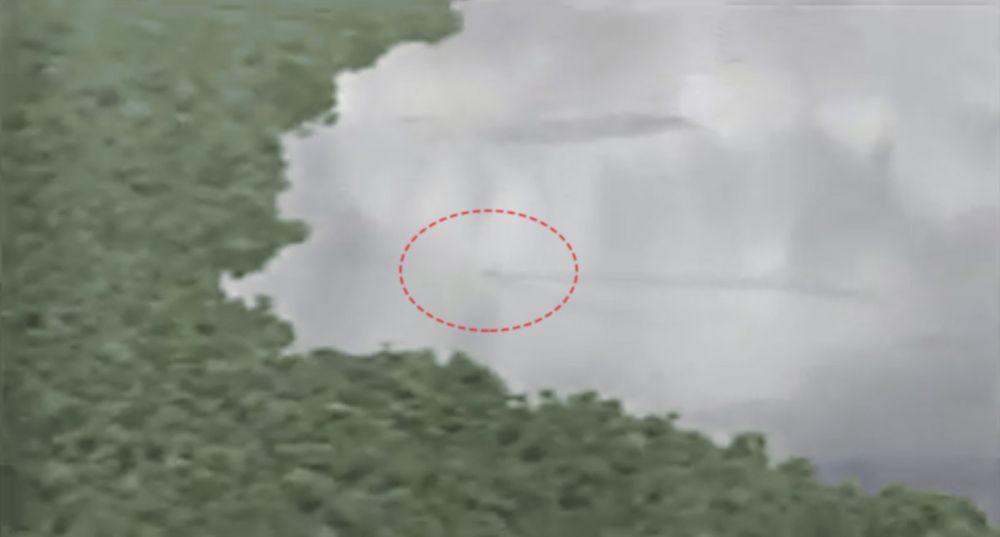
It is not sensible to list all known cases when mokele-mbembe has been met – there are many such cases.
First written source
The oldest known written mention is by French priest Abbé Liévain Bonaventure Proyart – in his book about the natural history of Congo (Histoire De Loango, Kakongo: Et Autres Royaumes D’afrique, 1776, page 39) he mentions:
While walking through the forest missionaries have observed traces of an unseen animal that should be of monstrous size. His claws have left footprints approximately three feet in circumference (?). They did not see it and could not tell whether it was walking or running but the distance between the footprints was seven feet.
Later writings
This animal has been described by many authors, including the famous Carl Hagenbeck in 1909. Captain Stein zu Lausnitz was the first to mention the name mokele-mbembe in 1913 – he reported that this animal has been seen at Ubangi, Sanga, and Ikelemba Rivers.
Several white people have claimed that they met the animal themselves – including Ivan Sanderson in 1932, Reverend Eugene Thomas in the 1960s, Herman Regusters and his wife in 1981.
In total there have been some 50 expeditions looking for mokele-mbembe. Many have returned in confidence that such an animal does not exist, but several have brought interesting materials – blurry images or footage of animals (reportedly caused by excitement or bad condition of filming gear), there are sharp images and casts of three-toed footprints as well as stories about short sightings of something unusual.
Expedition of Regusters
One expedition led by Herman Regusters in 1981 has been especially fruitful – during the 32 days long stay at the lake he recorded sounds, collected droppings, made casts of footprints. Five times he and his team members observed a large animal with a long neck. He and his wife heard an unusual, loud cry, starting as a low windy roar and culminating into a deep-throated trumpeting growl. The animal walked heavily through the thicket some 40 – 50 m far. Such cries were heard repeatedly and locals said that this is mokele-mbembe. Once the animal was heading towards the boat in the lake. It hid when noticing the boat.
Local legends
The tales of local people differ. Some researchers have learned that pygmies and other local people know the animal very well and have no doubt about its existence. Other researchers consider that mokele-mbembe is rather a spiritual being that lives only in the imagination of jungle people.
Most legends are told about Lake Tele. Locals have especially much respect for some short tributaries (lobes 6 and 10) of the lake.
At an unknown time (some sources tell that it happened in the 1930s, some – that in the 1950s or the 1960s) one or two mokele-mbembes reportedly were killed at Lake Tele by pygmies.
This group of fishermen reportedly was terrified by lake monsters while in a boat. In order to continue the fishing, they decided to hunt these animals and reportedly succeeded – killed one of them. This animal had a comb-formed frill on the back of its head. Fishermen tried to eat its meat – but it was not tasty.
We don’t know whether this happened in reality. The wet climate of Likouala Swamps would decompose any bones in a few years’ time.
References
- Herman A. Regusters. Mokele-Mbembe. An Investigation into Rumors Concerning a Strange Animal in The Republic of the Congo. 1981. Munger Agricana Library Notes, July 1982.
- Aseer Manilal, Chippu Shakir, Joseph Selvin, and Balu Sabarathnam. "Mokele-Mbembe": A Cryptozoological Animal of Centre African Prefecture: Veracity or Hoax. World Applied Sciences Journal 10 (5): 544 – 551, 2010.
Lake Tele is included in the following article:
 Linked articles
Linked articles
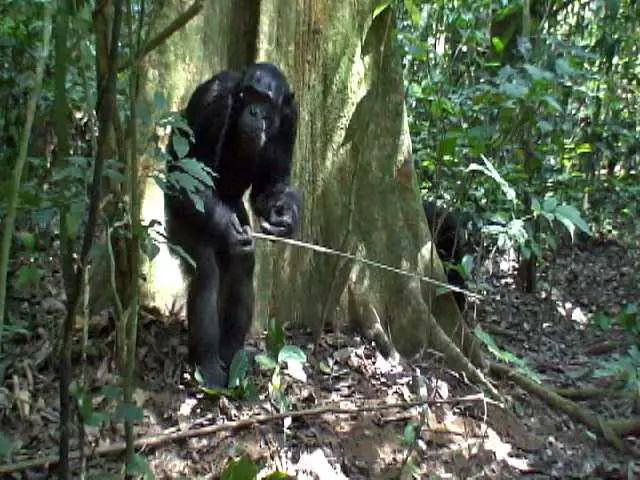
Wonders of Republic of the Congo
The Republic of Congo is an exotic country with diverse landscapes. Most of the country is covered with pristine rainforest and in some parts of the country humans have never lived – and don’t live up to this day.

Places with cryptozoological phenomena
Cryptozoology is a very exciting pseudoscience – a discipline that stands between true science and folklore.
It deals with legendary animals that seem to exist but their existence has not been proven.
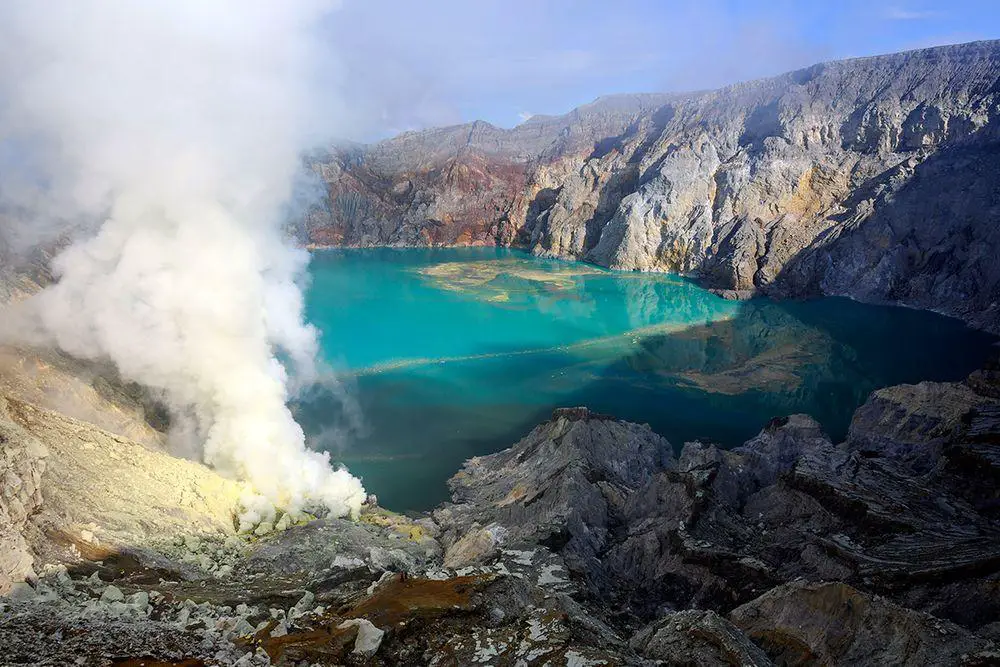
Lakes and streams
There are many factors that can make lakes, sea bays, or rivers unusual. Some lakes have unusual chemical properties and even do not contain water at all – such as lava lakes. Others may have unusual animals living in them or… legends about such animals.
 Recommended books
Recommended books
Mokele-Mbembe: Mystery Beast of the Congo Basin
Explorer, cryptozoologist, and creationist Bill Gibbons has traveled to remote corners of the world in search of strange and unknown creatures. But Bill’s heart is in Africa, where monstrous dinosaur-like creatures are still rumored to inhabit the vast swamps of the Congo Basin. In Mokele-Mbembe: Mystery Beast of the Congo Basin, Gibbons provides a fascinating insight into several expeditions that have ventured forth in search of suspected living dinosaurs, including several of his own.
Drums Along the Congo
An American explorer and cryptozoologist chronicles his adventures on the Congo searching for the elusive Mokele-Mbembe, a dinosaur-like creature reported to live in the river. By the author of The Search for the Pink-Headed Duck.

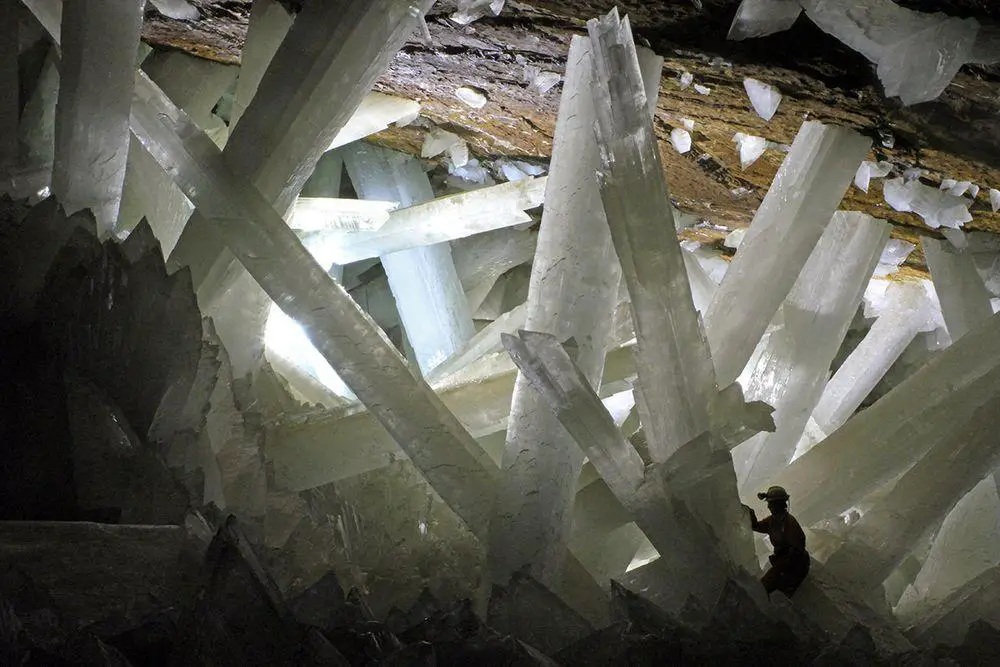


Fascinating, true science becomes legends when people don’t believe them.
Whom don’t believe? To be frank, the existence of hitherto unknown large animals in this lake seems to a legend – but a nice one, with a small possibility of some truth in it.